The Eternal City’s tempo is relentless. But at a quiet intersection just off Via del Corso, where ancient churches cast long shadows over cobbled alleys, a different cadence takes hold. Six Senses Rome—the brand’s first urban outpost—reframes the city not as spectacle, but as sanctuary.
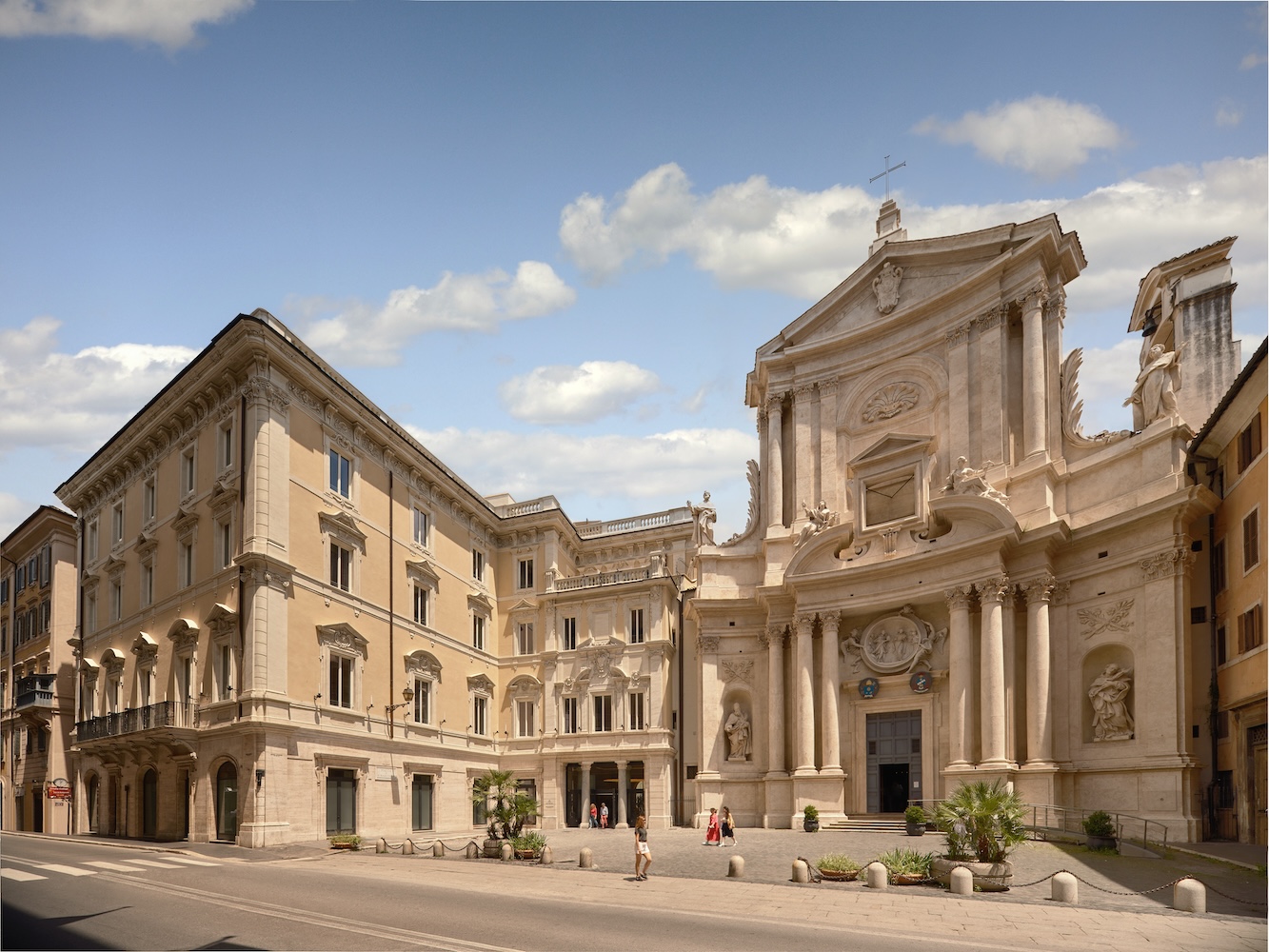
Long synonymous with remote wellness retreats—from jungle-fringed hideaways in Bhutan to vineyard-perched sanctuaries in Portugal—Six Senses has brought its regenerative ethos to the heart of a capital. The result is a city hotel that allows guests to slip into a slower pace, without ever losing sight of where they are.
Renaissance Restored
Housed within the 15th-century Palazzo Salviati Cesi Mellini, the hotel wears its heritage without nostalgia. The building, once home to cardinals and noble dynasties, has reawakened under the vision of Spanish architect Patricia Urquiola. Her interpretation is reverent but restrained—marble staircases left intact, travertine columns given space to breathe, and vaults restored with a lightness of touch. The palette leans natural: walnut, stone, terracotta. Texture is the ornamentation.
The effect is sensual but grounded. Sunlight cuts across linen curtains in slow arcs, and shadow pools at the base of arches and alcoves. Each space echos the interplay of ruin and renewal that defines the city beyond.
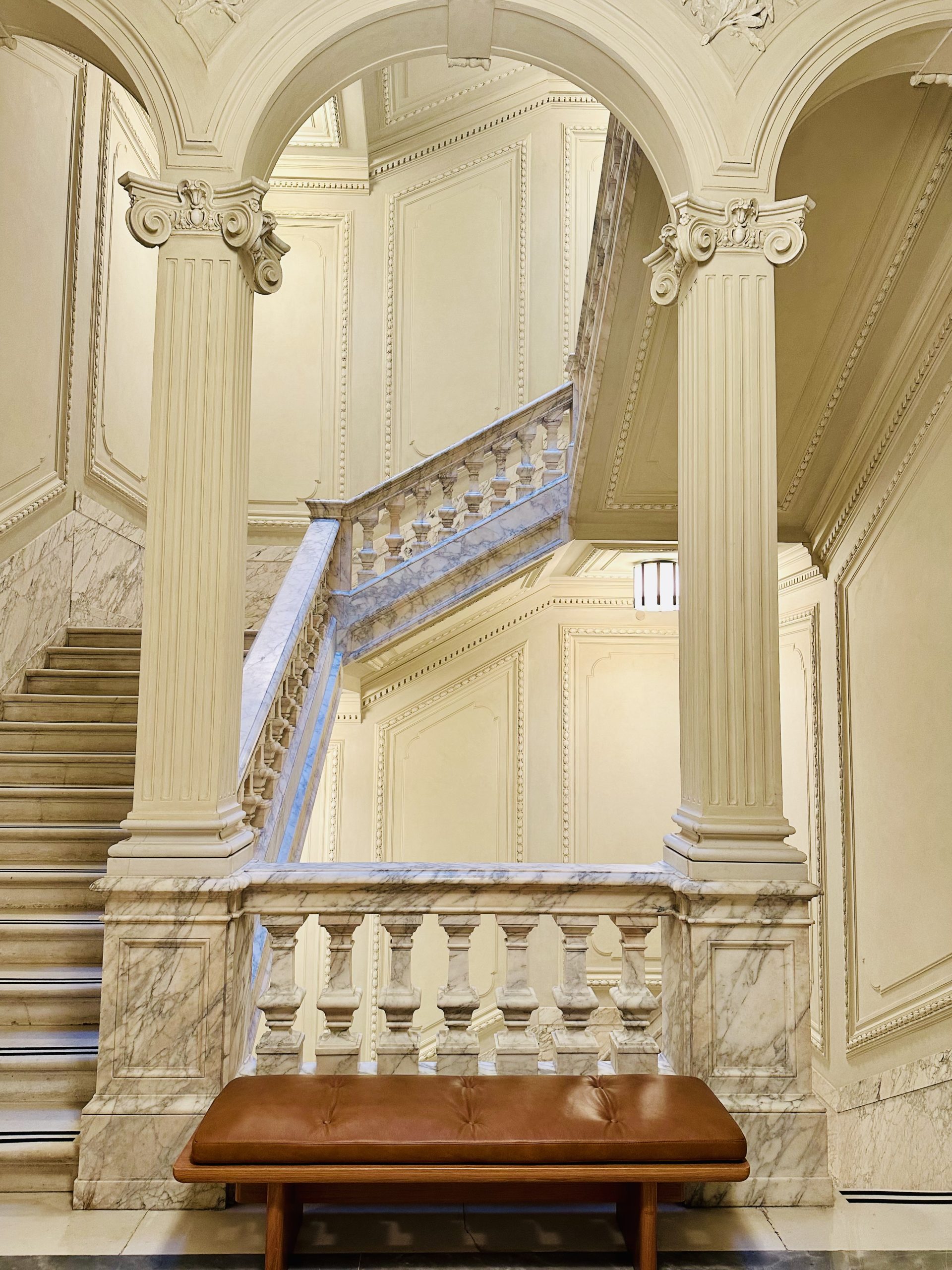
Stillness Meets Structure
From the outside, the hotel blends discreetly into its surroundings. Cross the threshold, and serenity settles in. The 96 rooms and suites embrace balance: high ceilings, muted tones, deeply comfortable beds dressed in flax and organic cotton. Some overlook the buzz of Baroque façades; others open onto the calm of an interior courtyard. All are soundproofed to near silence. Air purifiers hum inaudibly. Lighting adjusts to circadian rhythms. It’s luxury engineered for restoration.
Minibars offer complimentary elixirs and biodynamic wines. Bathrooms feature sculptural travertine basins and custom, plant-based amenities. A few suites tuck in extras like private hammams or terraces—quiet perches above the city swirl.
Cuisine
Dining at Six Senses Rome begins at BIVIUM, where the name—meaning crossroads in Latin—hints at the culinary perspective. The kitchen looks to the Mediterranean: seasonal vegetables charred and dressed with lemon and oil; hand-cut pastas laced with wild herbs; fish simply roasted, plated with purées and pulses. Morning reveals a jewel-box buffet of pastries, fruits, and cured meats.
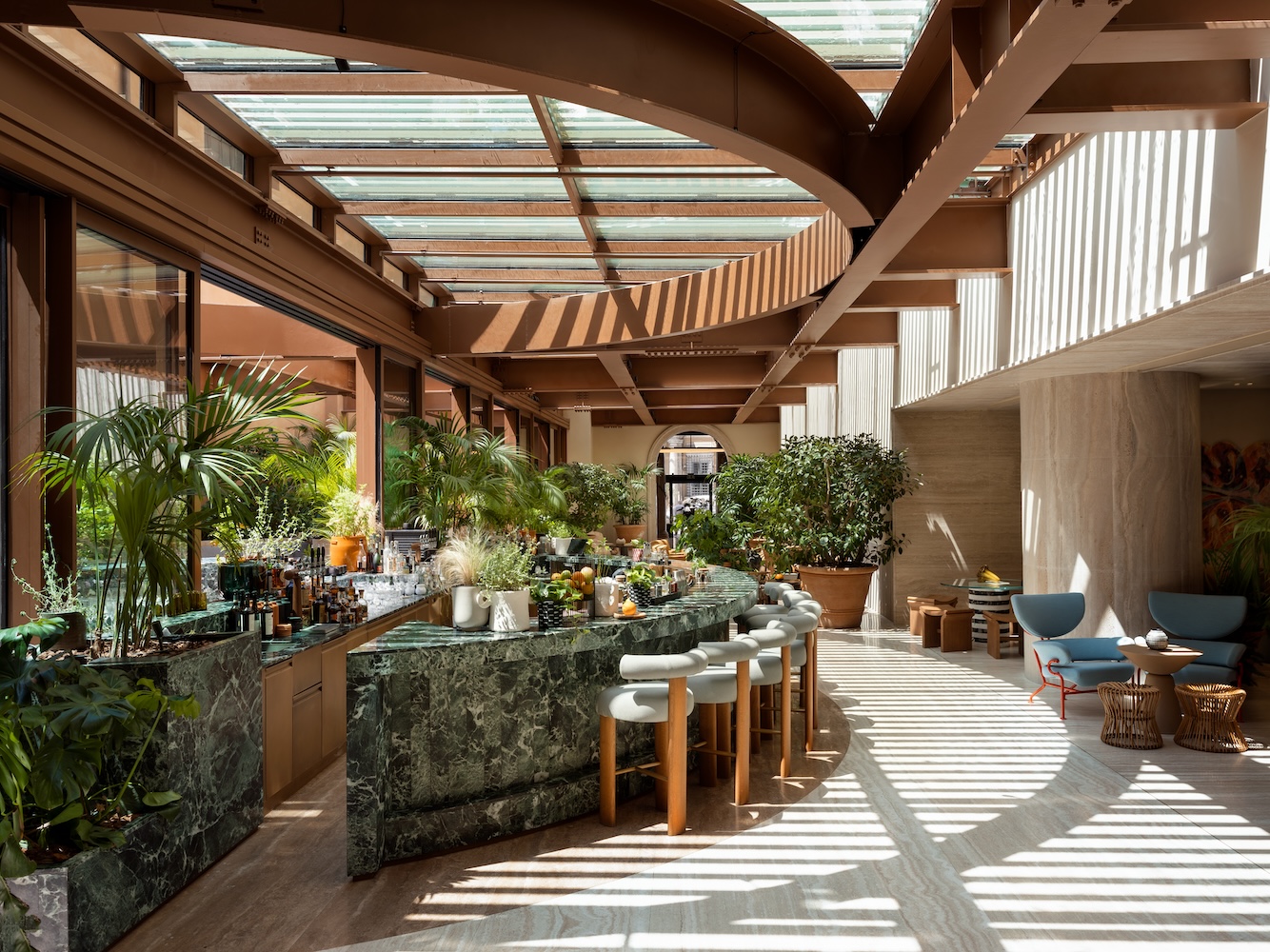
By evening, attention shifts upward. The rooftop restaurant, NOTOS, is an escape suspended above the skyline. Named for the Greek god of the southern wind, it opens onto a terrace edged with greenery and herbs, with views that sweep from Roman rooftops to the Altar of the Fatherland’s gleaming façade. Aperitivo here leans botanical—cocktails built with infused spirits and fresh citrus. Dinner stays light, ingredient-driven: crudo, grilled vegetables, clean proteins.
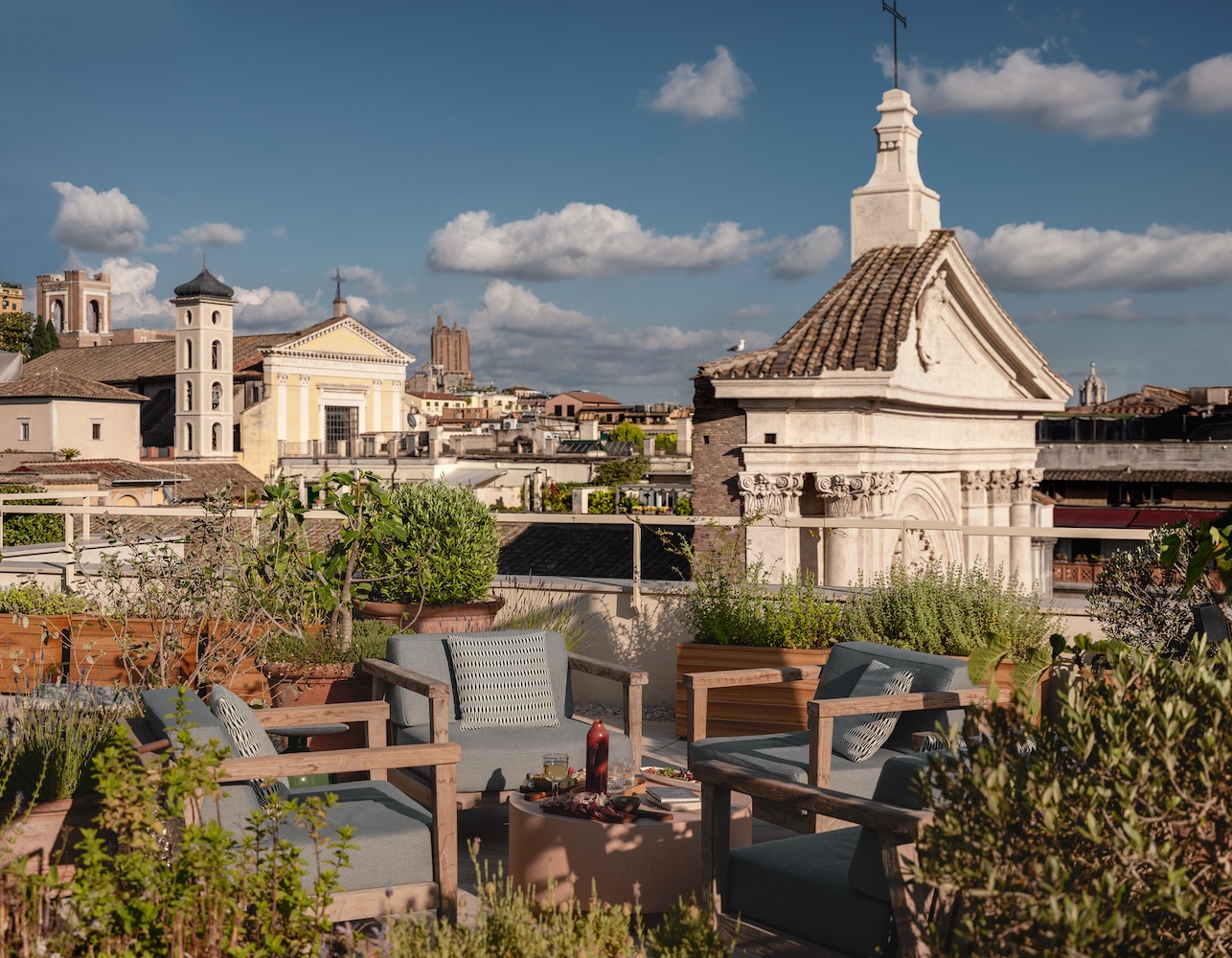
Rituals of Renewal
Beneath the surface lies the Six Senses Spa Rome and at its core, the Roman Baths—a modern homage to the city’s ancient thermae. The calidarium-tepidarium-frigidarium circuit anchors the spa experience, inviting guests to alternate between warm and cool plunges in a deeply restorative rhythm. Spa treatments borrow from tradition but speak in a contemporary vernacular: massage oils infused with local botanicals, facials rooted in bioactive ingredients. Access to the baths comes included with every stay—an essential, not an extra.
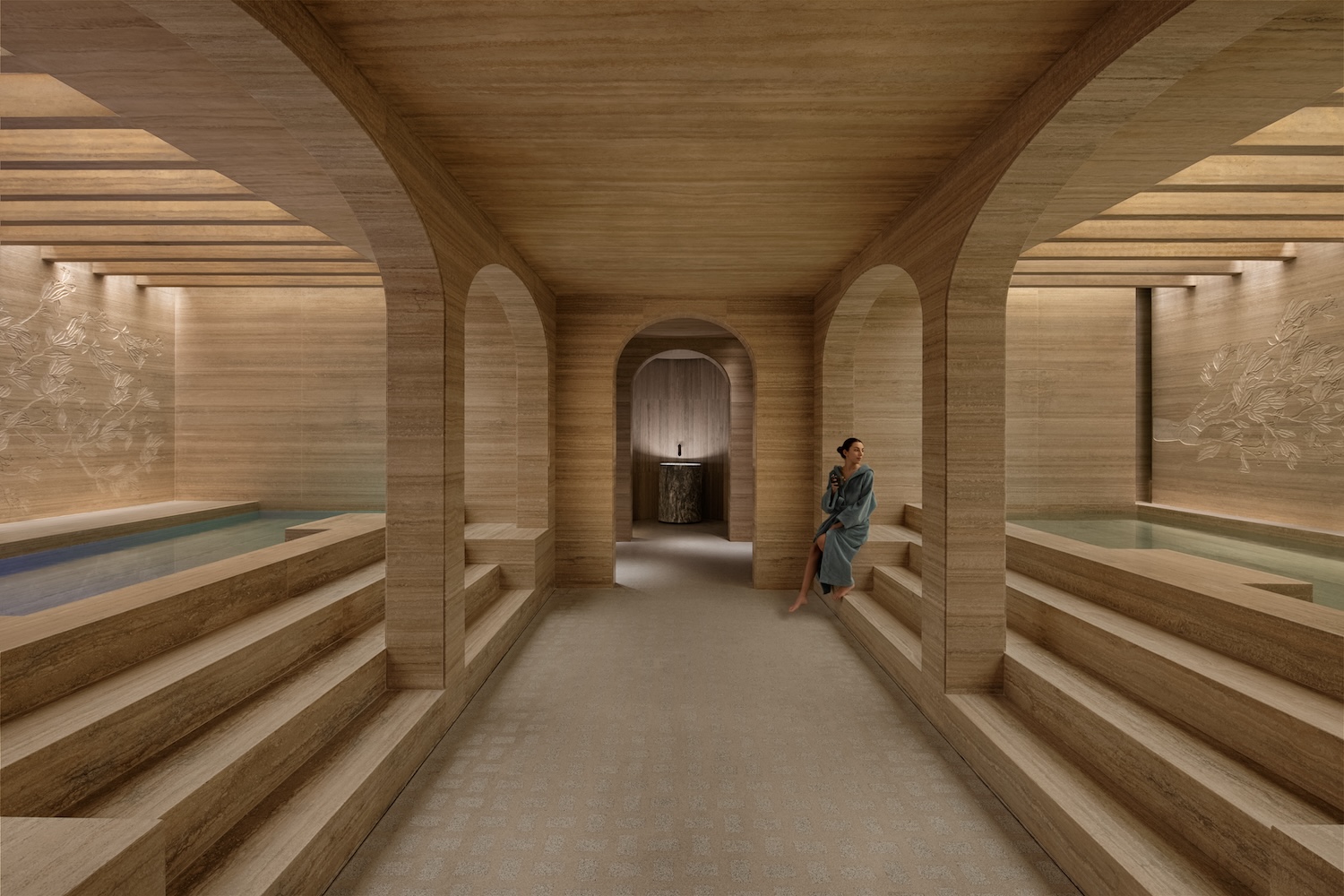
Thoughtful Explorations
This hotel doesn’t simply interpret Rome—it engages with it. Experiences offered through the concierge delve into the city’s strata: an early morning running tour led by historian and guide Isabella Calidonna of ArcheoRunning winds guests through near-empty piazzas and lesser-known ruins. Private visits to places like Palazzo Colonna and San Marcello al Corso reveal the city’s quieter wonders.

Inside, the Earth Lab acts as a hub for sustainability and curiosity. Guests might learn to make natural dyes, blend herbal remedies, or explore how the hotel reclaims rainwater, avoids single-use plastic, and supports regenerative farming across Lazio. These aren’t just gestures—they’re part of a broader commitment embedded into every layer of the operation.
A Hotel in Harmony
Six Senses Rome offers neither retreat nor immersion. It’s a quiet recalibration, a way of being within the city without being consumed by it.
In Rome, past and present coexist in every arch and alley. Six Senses follows suit.
Photos courtesy of Six Senses Rome, unless otherwise noted
